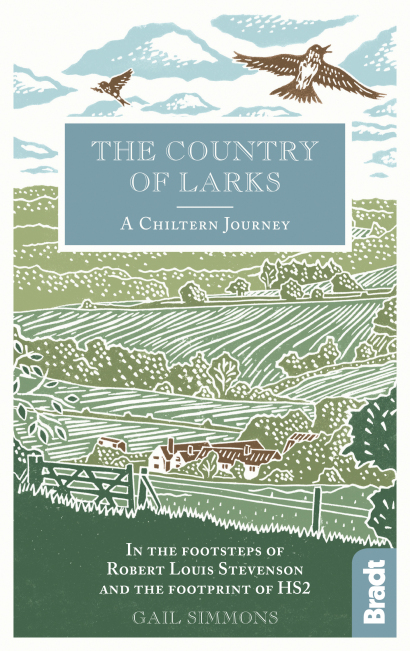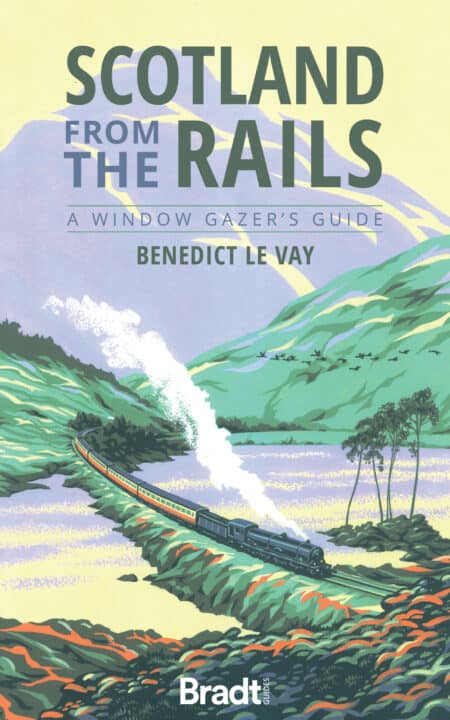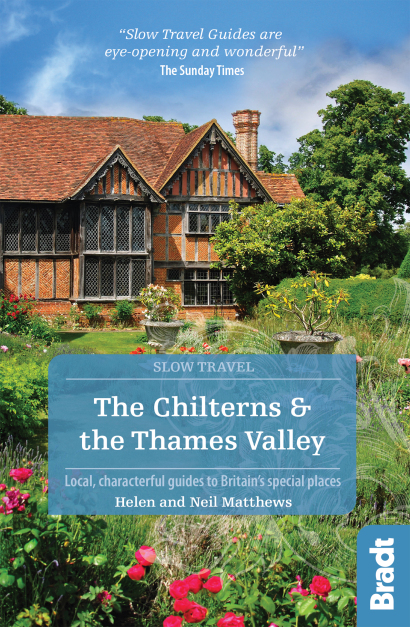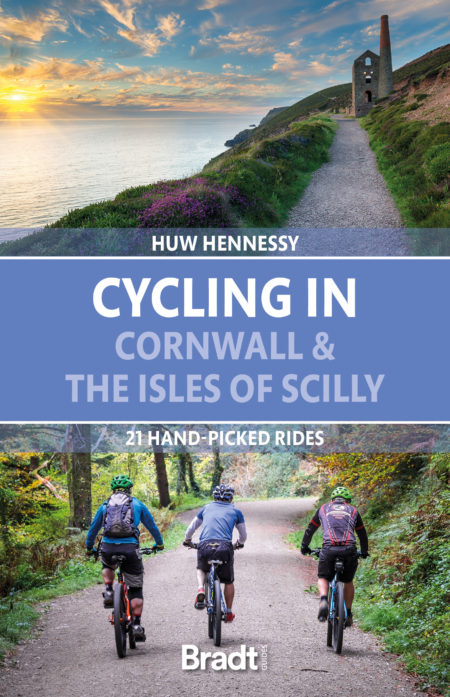Country of Larks: A Chiltern Journey
In the footsteps of Robert Louis Stevenson and the footprint of HS2
by Gail SimmonsThe Country of Larks – travel literature and nature writing describing a walk across the Chiltern Hills from High Wycombe to Tring in the footsteps of Robert Louis Stevenson and along part of the route of the controversial HS2 railway. Includes Little and Great Missenden, the Ridgeway, Wendover, Chilterns Way and the Thames Path, fauna and flora.
Size: 115 X 186 mm
Edition: 1
Number of pages: 192
About this book
Shortlisted in the Edward Stanford Travel Writing Awards 2020.
Travel writer and journalist Gail Simmons follows in the footsteps of Robert Louis Stevenson as she walks from High Wycombe in Buckinghamshire to Tring in Hertfordshire via Great Missenden and Wendover, tracing not only the changes in the landscape of the last 150 years but also those yet to come with the imminent arrival of the controversial HS2, the high-speed railway from London to Birmingham. Just as Stevenson spoke to people he met along the way, Simmons encounters those whose lives will be affected by HS2: a tenant farmer, a retired businessman-turned-campaigner, a landscape historian and a conservationist.
In the autumn of 1874 a young, unknown travel writer called Robert Louis Stevenson walked from High Wycombe in Buckinghamshire to Tring in Hertfordshire. He wrote up his three-day journey across the Chiltern Hills in an essay titled In the Beechwoods, penned a decade before he found fame as the author of Treasure Island and The Strange Case of Dr Jekyll and Mr Hyde. Stevenson observed the natural world, reflecting on the experience of walking across this landscape at a time when England was still largely agrarian and when most people still earned their living from working the land. During his walk he was accompanied by a ‘carolling of larks’ that was so integral to his journey he ‘could have baptized it “The Country of Larks” ‘.
Almost 150 years later Simmons walks across the same landscape, observing the loss of flora, fauna and the whole rural way of life, replaced by commuters and dormitory villages, a trend portrayed by John Betjeman in Metro-land (1973), which described suburban life alongside the Metropolitan Railway.
Divided into three parts to parallel Stevenson’s journey the book offers a detailed, almost forensic, examination of this distinctive landscape of English chalk downland interwoven with recollections from Simmons of growing up in a Chilterns commuter village. ‘I might have left long ago’ she says, ‘but this place still matters to me’.
Before ordering ebooks from us, please check out our ebook information.
About the Author
Travel writer Gail Simmons was born in Northumberland to an army family who, after periods living overseas, settled in a Chiltern commuter village on the borders of Buckinghamshire and Hertfordshire.
After completing an MA in medieval history Gail pursued a varied career that included working in a Cumbrian castle, protecting historic buildings and leading walking trips in Europe and the Middle East, before becoming a full-time travel writer specialising in independent and sustainable journeys. In 2016 Gail completed a PhD in Creative Writing and she now teaches travel writing at Bath Spa and Cambridge universities.
Despite her lifelong global wanderings Gail finds special enjoyment in exploring her home country of Britain, recently rediscovering the quiet allure of the Chiltern Hills where she grew up and which, aged eighteen, she couldn’t wait to leave. Now, with HS2 looming, Gail realises just how important this threatened landscape still is to her.
Reviews
‘An eloquent, evocative and timely contemplation of the changing nature of life and landscape in the English countryside.’
The Oxford Times
‘Entertaining and very readable’
South East Walker Magazine
‘This is a very enjoyable read’
Country-Side Magazine
‘A delightful mix of history, memoir, nature and etymology’
Countryfile Magazine
Additional Information
Table of ContentsIntroduction
The Campaigner
Day One
The Historian
Day Two
The Farmer
Day Three
The Conservationist
Postscript
Appendix




